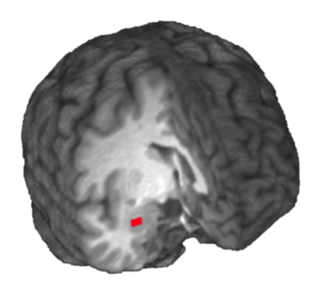Altruism
Above and Beyond
An introduction to altruism in the world and in the lab
Posted August 5, 2016
By Kristin Brethel-Haurwitz and Abigail Marsh
As a firefighter in Pierce County, Washington, it is Jo Kummerle’s job to save lives. But, going above and beyond the call of duty, she has saved lives off-duty as well.
Three years ago, Kummerle’s mother was in kidney failure and had to start dialysis. Kummerle tried to donate one of her own kidneys, but learned she wasn’t a match. Luckily, even though no family members or friends turned out to be matches, Kummerle’s mother was able to receive a transplant from a stranger.
After seeing her mother’s full recovery, Kummerle called the University of Washington Medical Center with an unusual offer: She wanted to donate a kidney to anyone who needed it. Despite all the risks, pain, and inconvenience associated with major surgery, Kummerle decided to have herself cut open. By giving her kidney to a complete stranger, she ended up saving not just one life, but six. Her donation kicked off a transplant chain that resulted in six kidney donations.
Donating a kidney to a stranger, as Kummerle did, seems a clear example of altruism—usually defined as a costly behavior motivated by the desire to help another person. It can be difficult to pin down the motivation for any complex behavior, of course. But in general, the costlier a given behavior and the more distant the relationship between the altruist and the beneficiary, the harder it is to call it anything but altruism. The extraordinary choice to undergo major surgery so that one’s own internal organ can be removed and transplanted into a stranger clearly qualifies. And unlike other day-to-day acts of selflessness, like giving money to charity, donating a kidney to a stranger is an especially rare decision. According to the Organ Procurement and Transplantation Network, only about 150 people in the U.S. each year volunteer to do what Kummerle did.
How can such an act of extraordinary altruism be explained? This is a question that has puzzled philosophers, biologists, economists, and psychologists for centuries.
In our lab at Georgetown University, we are looking for answers. Over the last six years, we have been working with dozens of altruistic kidney donors like Kummerle from all over the country. We’ve interviewed them to learn more about their lives and motivations for donating, run them through batteries of psychological tests, and scanned their brains using MRI. Our goal is to understand what leads people to engage in extraordinarily altruistic behavior, and what, if anything, makes such people different from the rest of us.
One thing we have found is that altruists seem to be particularly attuned to signs that another person is in distress. They have a better-than-average ability to recognize when others are frightened, which seems to result from an area of their brain, called the amygdala, being more reactive to fearful facial expressions. This fear-sensitive part of the brain is also physically bigger in altruists.

These patterns are especially interesting because they are the opposite of those seen in psychopaths—particularly uncaring and selfish individuals—who have smaller, less active amygdalas. Together, these results suggest that humans may naturally vary along a sort of a “caring continuum,” a spectrum ranging from highly altruistic people who care a lot about others’ welfare to psychopathic people who don’t care much at all.
Many people assume that human nature is fundamentally and uniformly selfish. According to the ancient Greek philosopher Aristotle, “All the friendly feelings extend to others from those that have the Self primarily for their object,” meaning that even when we are kind to others, we are always looking out for ourselves first. This belief has had staying power over the centuries, but the existence of the caring continuum implies it may not be true. Instead, many of us may have the capacity to engage in extraordinary acts of altruism. Altruistic impulses are more common that you might expect—in 2000, the National Kidney Foundation found that almost a quarter of the people they polled would consider donating a kidney to a stranger.
If this is the case, why don’t more people follow through and donate?
One factor that seems to matter is where people live. We’ve found that Americans who live in states with higher levels of well-being are more likely to become altruistic kidney donors than those who live in states with low well-being. Being in a place where people have a better quality of life, have higher life satisfaction, and have their basic needs met may nudge those who are considering altruistic donation to take action. This dynamic has the potential to turn into an upward spiral as well. Not only are people whose lives are going well more cooperative and generous, but being generous also makes people happier.
The urgency for understanding altruistic behavior is growing. Thousands on the kidney transplant waiting list continue to die each year, even though there exist millions of spare, healthy kidneys that could save them. Understanding the nature of human altruism may be fundamental to figuring how to encourage more kidney donations—as well as donations of other much-needed resources like blood, plasma, and bone marrow.
Organizations helping to solve the transplant problem problem include WaitListZero, which advocates to increase awareness of living kidney donation and to promote the welfare of donors, and Organize, through which people can register to donate their organs after death (even via Tweet, by using the hashtag #donatemyparts).
“Transplant chains” have also grown increasingly common. As in Kummerle’s case, kidney donations between two family members are not always possible, even when a family member is willing to donate. But if that family member is willing to donate to a stranger—who also has a willing but non-matching family member willing to donate to yet another stranger—a chain can be formed. It was also a chain that saved Kummerle’s mother—her sister was not a match for their mother, but contributed to a chain that resulted in their mother’s transplant. The longest such chain to date involved 34 recipients and 34 donors.
Starting a chain usually requires someone like Kummerle without a connection to any recipients—an altruistic donor.
Clearly, there is much to be gained from better understanding the altruistic impulse. Where does it come from? Why do we have it? And how can we foster it? It is these questions our research seeks to answer, and that we will be addressing in For Goodness’ Sake.
In this space, we will review what we know about altruism, and what we are learning from research in the lab and events in the world. We will talk about what makes us altruistic, why we help others, and how we might go about making desperately needed forms of altruism like altruistic kidney donation more common. The world is full of bad news about people hurting and mistreating each other. Focusing on these problems is important, but it would be a mistake to lose sight of how much goodness there is in the world too.




